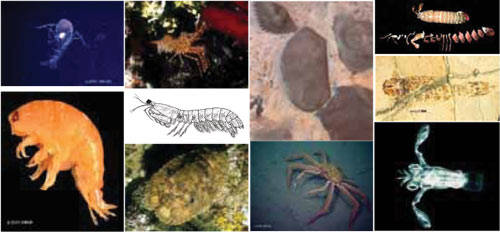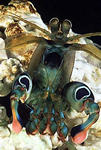Introduction to the Crustaceamorpha
Seafood special and other crusties


The Crustaceamorpha includes lobsters, crabs, shrimp, pill bugs, krill, barnacles, water fleas, brine shrimp (sea monkeys), copepods, ostracods, and more—many, many more. In fact, about 38,000 species have been described and named to date. There are many more that remain to be named, particularly in the deep sea. A number of species are economically important to humans as sources of food, and many serve as the main source of food for many fish and whales.
If you aren't yet convinced how important crustaceans are, think about this: Crustaceamorpha are the dominant arthropods, and very often the most numerically abundant type of animal in aquatic environments. They make up a significant portion of animal communities in all aquatic habitats, from the most extreme (glacial ice or temporary desert ponds) to the largest (deep ocean) and everywhere in between. The Crustaceamorpha are arguably the most well known of the arthropods because of their contributions to aquatic, aerial, and terrestrial food webs.
Crustaceans have an extremely wide variety of body shapes. In fact, body form is so varied throughout the crustacean groups that the only feature all crustaceans share is the possession of two pairs of antennae at some stage of their life cycle. Their colorful exoskeletons and active habits make them favorites to watch at aquariums and when scuba diving.
You can navigate deeper into the crustaceamorpha groups by selecting Systematics!
 |
Don't miss this UCMP special exhibit: Secrets of the Stomatopod: An Underwater Research Adventure. |
